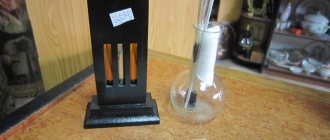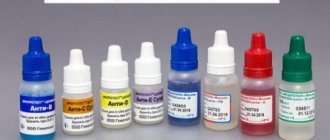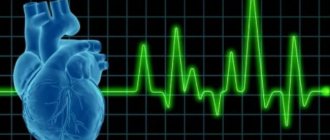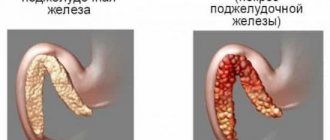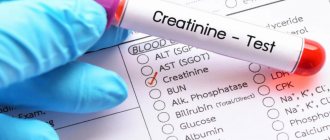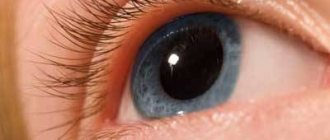Glycated hemoglobin (A1c) is a specific compound of red blood cell hemoglobin with glucose, the concentration of which reflects the average glucose content in the blood over a period of about three months.
Synonyms Russian
Glycohemoglobin, hemoglobin A1c, HbA1c, glycosylated hemoglobin.
English synonyms
Glycated hemoglobin, hemoglobin A1c, HbA1c, glycohemoglobin, glycosylated hemoglobin.
Research method
Ion exchange high performance liquid chromatography (HPLC).
Units
% (percent).
What biomaterial can be used for research?
Venous blood.
How to properly prepare for research?
- Do not eat for 2-3 hours before the test; you can drink clean still water.
- Avoid physical and emotional stress for 30 minutes before the test.
- Do not smoke for 30 minutes before the test.
General information about the study
The glycated hemoglobin (A1c) test helps estimate the average blood glucose level over the past 2-3 months.
Hemoglobin is a protein found inside red blood cells (erythrocytes) that carries oxygen. There are several types of normal hemoglobin, and many abnormal varieties have been identified, although the predominant form is hemoglobin A, accounting for 95-98% of total hemoglobin. Hemoglobin A is divided into several components, one of which is A1c. Part of the glucose circulating in the blood spontaneously binds to hemoglobin, forming so-called glycated hemoglobin. The higher the concentration of glucose in the blood, the more glycated hemoglobin is formed. Having combined with hemoglobin, glucose remains “bound” with it until the very end of the red blood cell’s life, that is, 120 days. The combination of glucose and hemoglobin A is called HbA1c or A1c. Glycated hemoglobin is formed in the blood and disappears from it every day, as old red blood cells die and young (not yet glycated) take their place.
The hemoglobin A1c test is used to monitor the condition of patients diagnosed with diabetes mellitus. It helps assess how effectively glucose levels are regulated during treatment.
For some patients, a hemoglobin A1c test is ordered to diagnose diabetes and prediabetic conditions in addition to a fasting plasma glucose test and a glucose tolerance test.
The resulting indicator is measured as a percentage. Patients suffering from diabetes should strive to keep the level of glycated hemoglobin no higher than 7%.
A1c should be reported in one of three ways:
- as a percentage of the total amount of hemoglobin,
- in mmol/mol, according to the International Federation of Clinical Chemistry and Laboratory Medicine,
- as the average glucose content mg/dl or mmol/l.
What is the research used for?
- To control glucose in patients with diabetes, maintaining its blood level as close to normal as possible is very important. This helps minimize complications to the kidneys, eyes, cardiovascular and nervous systems.
- To determine the patient's average blood glucose levels over the past few months.
- To confirm that the measures taken to treat diabetes are correct and to find out whether they require adjustments.
- To determine uncontrolled rises in blood glucose in patients with newly diagnosed diabetes mellitus. Moreover, the test can be prescribed several times until the desired glucose level is detected, then it must be repeated several times a year to ensure that normal levels are maintained.
- For preventive purposes, to diagnose diabetes at an early stage.
When is the study scheduled?
Depending on the type of diabetes and how well the disease responds to treatment, an A1c test is performed 2 to 4 times a year. On average, patients with diabetes are recommended to have their A1c tested twice a year. If a patient is diagnosed with diabetes for the first time or the control measurement is unsuccessful, the test is ordered again.
In addition, this test is prescribed if the patient is suspected of having diabetes, since there are symptoms of high blood glucose:
- strong thirst
- frequent excessive urination,
- fast fatiguability,
- blurred vision,
- increased susceptibility to infections.
What do the results mean?
Reference values: 4.27 - 6.07%.
The closer the A1c level is to 7% in a diabetic patient, the easier it is to control the disease. Accordingly, with an increase in the level of glycated hemoglobin, the risk of complications also increases.
The results of the A1c analysis are interpreted as follows.
| Glycated hemoglobin indicator | Meaning |
| 4-6,2 % | The patient does not have diabetes |
| 6.5% and more | The patient has diabetes |
| 5,7-6,4 % | Prediabetes (impaired glucose tolerance associated with an increased risk of diabetes) |
According to the clinical recommendations of the Ministry of Health of the Russian Federation of the Russian Association of Endocrinologists NGO “Algorithms for specialized medical care for patients with diabetes mellitus” (2019), an additional diagnostic indicator is the average daily plasma glucose level (ADPL) for the last three months and its correlation with the HbA1c level.
What can influence the result?
Patients with abnormal forms of hemoglobin, such as those with sickle cells, will have low levels of glycated hemoglobin. In addition, if a person suffers from anemia or severe bleeding, his test results may also be underestimated. On the contrary, A1c levels are elevated due to iron deficiency and recent blood transfusion (since liquid blood preservatives contain a high concentration of glucose).
Determination of hemoglobinpresentation for the lesson
Slide 1
Methods for determining hemoglobin concentration
Slide 2
Assessment of hemoglobin content: clinical significance: ↓ Decrease in hemoglobin concentration: anemia (impaired Hb synthesis, blood loss, hemolysis, lack of red blood cell production, etc.)
Slide 3
↑ Increased hemoglobin concentration: polycythemia, hemoconcentration during dehydration, burns, persistent vomiting; exposure to high altitudes, excessive exercise or agitation;
Slide 4
lung diseases leading to decreased pulmonary perfusion and poor lung aeration; chronic chemical exposure to nitrites, sulfonamides, causing the formation of meth- and sulfohemoglobin. ↑ Increase in hemoglobin concentration:
Slide 5
The term “total hemoglobin” applies to the totality of hemoglobin forms that are present in the blood of healthy people or appear in pathology:
Slide 6
hydroxy hemoglobin (HbO 2); reduced hemoglobin (Hb) (synonyms: hemoglobin (H Hb ++), ferrohemoglobin (Hb 4)); carbo hemoglobin (HbCO 2) (CO 2 - carbon dioxide) Normal forms of hemoglobin
Slide 7
carboxy hemoglobin (HbCO) (syn.: carbonmonoxyhemoglobin (HbCO) 4; met hemoglobin (MetHb), synonyms: hemI globin (Hb +++), ferrihemoglobin (Hb 4 +3); sulf hemoglobin (SHb), synonym - verdoglobin S; hemeIglobincyanide (HiCN) (syn.: cyanmethemoglobin (CNMetHb)); etc. Pathological forms of hemoglobin
Slide 8
ANALYSIS METHODS Most of all in the blood are: oxyhemoglobin, deoxyhemoglobin, carboxyhemoglobin, methemoglobin. Absorption spectra of oxyhemoglobin (HbO2), deoxyhemoglobin (HbH), methemoglobin (HbMet), carboxyhemoglobin (HbCO)
Slide 9
To determine hemoglobin, hemoglobin derivatives are most often analyzed, formed during its oxidation and the addition of various chemical groups to heme, leading to a change in the valence of iron and the color of the solution.
Slide 10
When quantifying hemoglobin by colorimetric methods, the problem arises in choosing a reagent that would convert all hemoglobin derivatives into only one form before photometric analysis.
Slide 11
The best methods for quantitatively converting hemoglobin into its derivatives turned out to be: hemiglobin cyanide (HbCN), hemichrome (HbChr) and hemiglobinazide (HbN3), which, when photometrically, give the smallest determination error among other methods of analysis.
Slide 12
Hemiglobincyanide method (Drabkin method) (1936) Absorption spectrum of cyanmethemoglobin (CNmetHb) Principle of the method: all forms of hemoglobin are converted to hemiglobincyanide (using a transforming reagent (containing potassium iron cyanide, potassium cyanide and sodium bicarbonate) at a wavelength of 540 nm
Slide 13
Hemohyglobincyanide method (Drabkin method) (1932) A 540 HiCN x 16114.5 x 10 -3 x P Hb (g/l) = =367.7 x A 540 HiCN 11.0 x L A 540 HiCN - absorption of hemoglobin solution at a wavelength of 540 nm, 16114.5 - molecular weight of hemoglobin monomer, 11.0 - millimolar extinction coefficient of cyanmethemoglobin, L - optical path length, equal to 10 mm in most photometers, 10 -3 - conversion of the molar mass of hemoglobin to millimolar mass P - blood dilution (1: 251, ratio of 20 μl of blood and 5.0 ml of transforming solution)
Slide 14
The conversion of hemoglobin to hemiglobin cyanide is carried out by its interaction with a transforming solution containing potassium ferricyanide, potassium cyanide, potassium dihydrogen phosphate and nonionic detergent: The detergent enhances the hemolysis of red blood cells and prevents turbidity associated with plasma proteins. Potassium dihydrogen phosphate maintains a pH level at which the reaction takes place in 3-5 minutes.
Slide 15
Potassium ferricyanide oxidizes all forms of hemoglobin into methemoglobin, which forms, with potassium cyanide, hemeIglobincyanide, which has a reddish color, the color intensity of which is directly proportional to the concentration of hemoglobin in the sample. Oxy hemoglobin Deoxy hemoglobin Carboxy hemoglobin Met hemoglobin
Slide 16
Characteristics of the method The hemiglobincyanide method, developed in 1936 by Drabkin, was approved by the International Committee for Standardization in Hematology (ICSH) in 1963. The main advantage of the hemiglobincyanide method is that HbCN (hemiglobincyanide) is a stable derivative of hemoglobin, and all forms present in the blood hemoglobin can be quickly and quantitatively converted into HbCN; The method provides the ability to obtain results with an error NOT exceeding ± 2%.
Slide 17
Safety requirements when working with a solution containing cyanide compounds Despite all the positive parameters of the hemiglobin cyanide method, its big drawback is that it is based on the use of poisonous cyanide compounds;
Slide 18
Instead of potassium cyanide, many use masked cyanide - acetone cyanohydrin, which, during the preparation of the transforming solution, decomposes to form cyanide ion. The nature of the action of acetone cyanohydrin on humans is similar to the action of hydrocyanic acid, but the effect develops more slowly. Acetone cyanohydrin is absorbed through the skin and can cause severe poisoning. Its maximum permissible concentration (MPC) is 0.9 mg/m3, hazard class 2.
Slide 20
Optical design
Slide 21
Dependence of the readings of the MiniGem-540 hemoglobinometer on the time of incubation of blood samples with the transforming solution. The graph shows that only 15 minutes from the start of the lysis reaction, the readings of the device begin to stabilize and then do not change over the next 2 hours. Therefore, hemoglobin measurement should be carried out no earlier than 20 minutes after adding blood to a test tube with a transforming solution, when all the hemoglobin present in the test tube is converted into the final reaction product - cyanmethemoglobin.
Slide 22
Hemichrome method The principle of the hemichrome method is based on the conversion of all forms of hemoglobin into one - hemichrome. The color intensity is directly proportional to the hemoglobin concentration in the sample. Hemoglobin Hemi-chrome Transform. solution: Fatty acids + Ferricyanide K (or Na dodecyl sulfate)
Slide 23
Hemichrome method Absorption spectrum of methemoglobin (HbMet) The maximum of the hemichrome absorption curve is at a wavelength of 533 nm. The typical wavelength closest to 533 nm is 540 nm, at which photometry is carried out taking into account the conversion factor (factor) for 540 nm.
Slide 24
The main advantage of the hemichromic method is that the forms of hemoglobin contained in the blood can be quickly and quantitatively converted into HbChr while the transforming solution is completely harmless
Slide 25
Optical design
MCHC (Mean Corpuscular Hemoglobin Concentration) - the average concentration of hemoglobin in a red blood cell
Parameter calculation
MCHC reflects the concentration of hemoglobin in the “average” erythrocyte (the ratio of hemoglobin content to cell volume) and characterizes the degree of saturation of the erythrocyte with hemoglobin as a percentage. This parameter can be calculated using hemoglobin and hematocrit indicators:
MCHC = Hb (g/dL) 100/Ht (%).
Genetically determined indicator
The average hemoglobin content in an erythrocyte is the most stable, genetically determined indicator and for adults does not depend on age, gender, or race. The coefficient of variation of this parameter in patients in the clinic is 4–5%.
Of all the erythrocyte indices, MSHC is the least susceptible to fluctuations under pathological conditions. Therefore, its reduction is of great value in diagnosis:
- iron deficiency anemia,
- thalassemia,
- lead intoxication,
- some hemoglobinopathies.
Error indicator
For the same reason, the parameter can be used as an indicator of instrument error or inaccuracy made when preparing a sample for research. The stability of calibrations, the correct functioning of equipment - all this is useful to monitor using the current average MCHC value. It should fluctuate within 34±2 units.
Clinical and diagnostic value
| Promotion | Decrease (to <31 g/dL) |
|
|
